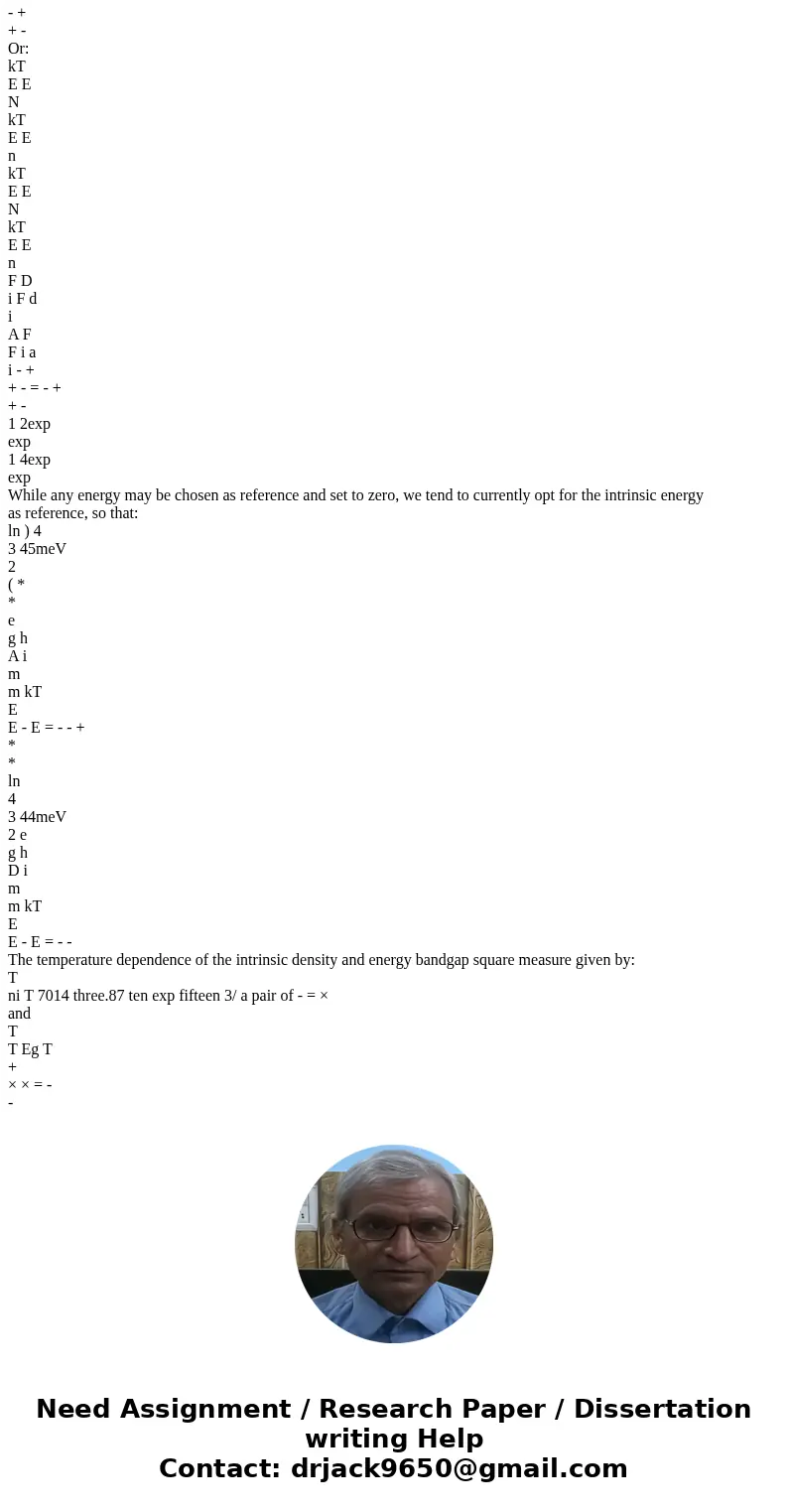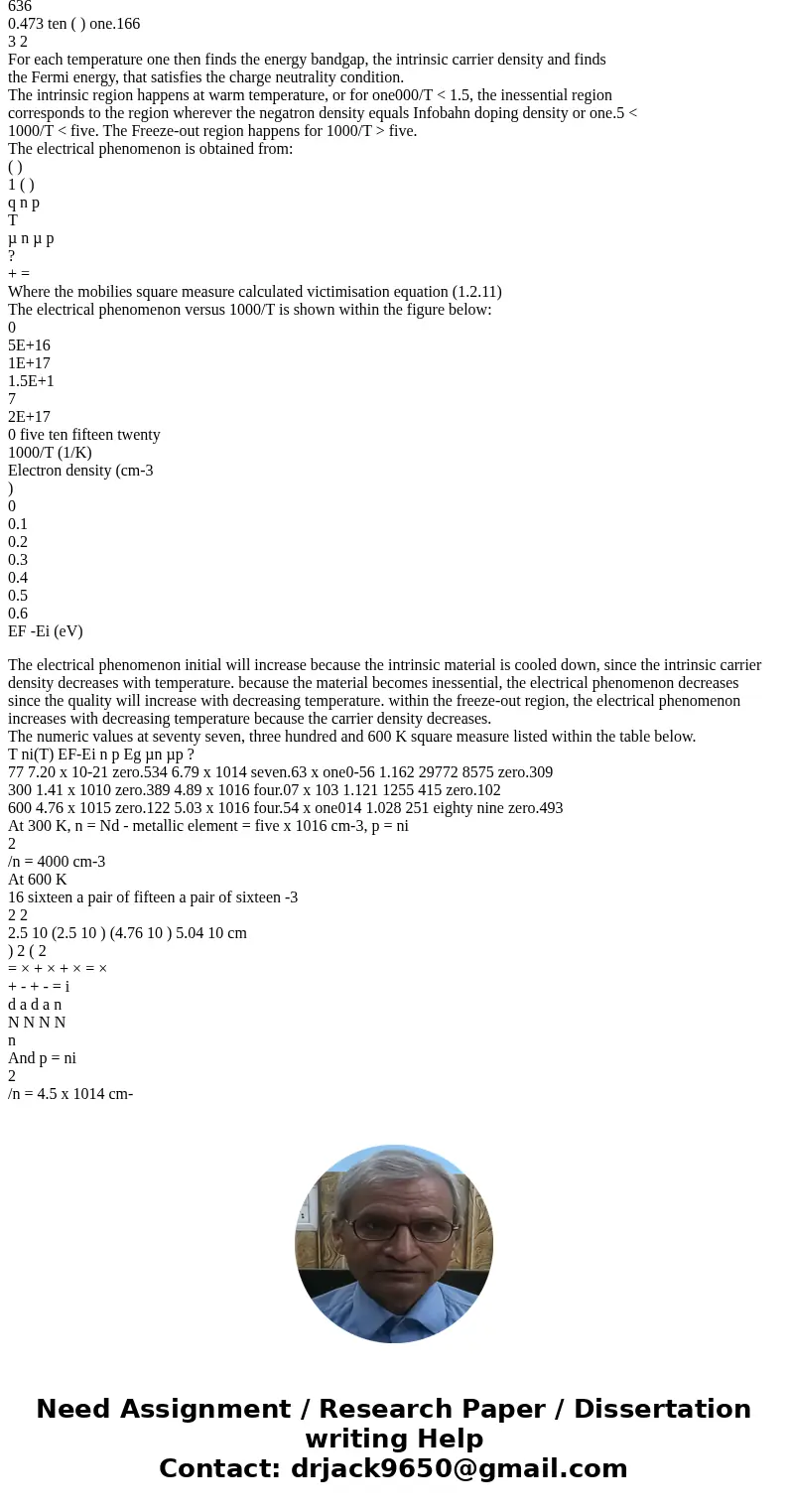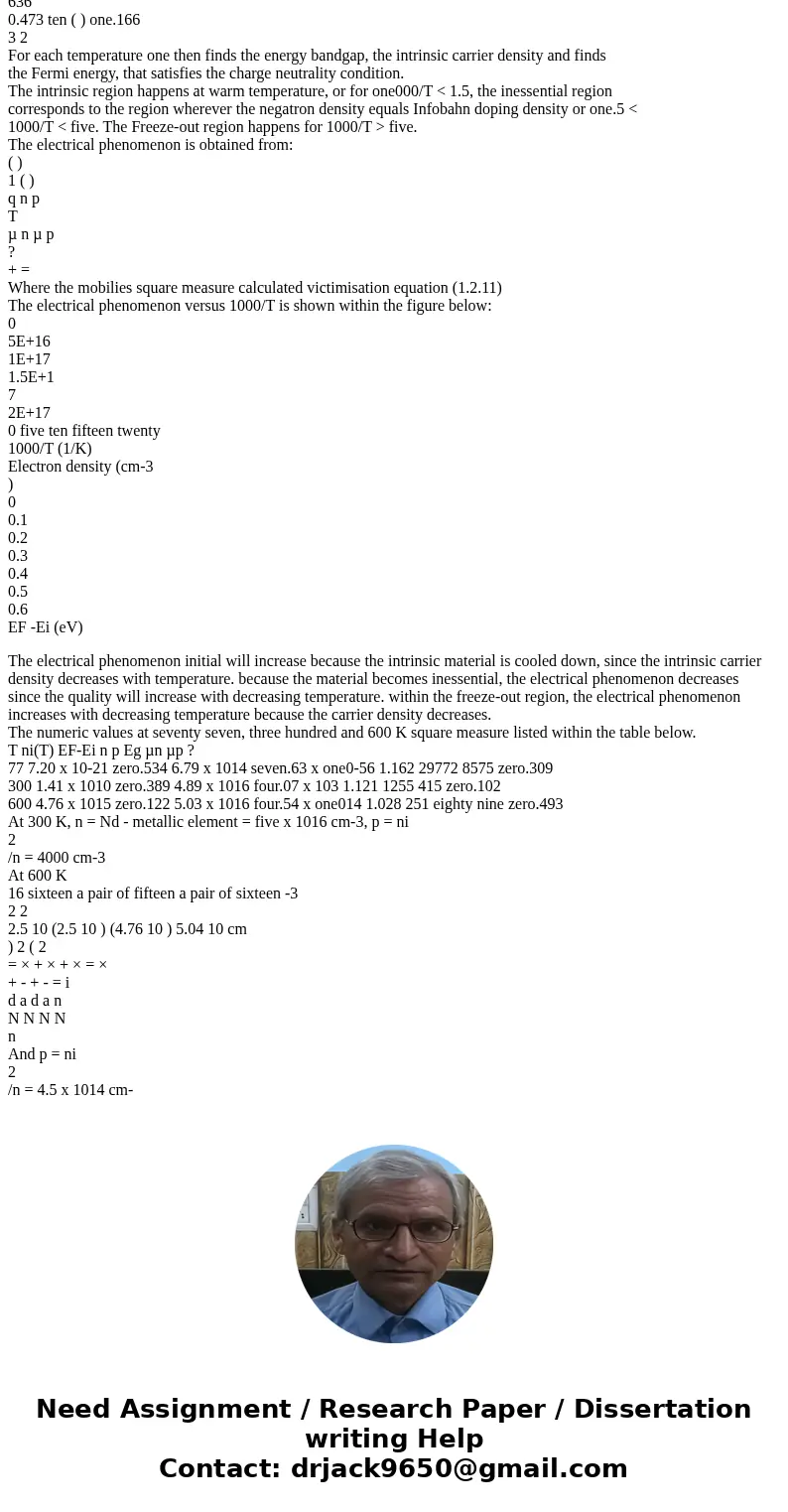For the below training sequence having 20 points find the co
Solution
Consider a semiconducting material wafer, that is doped uniformly with 1017 cm-3 chemical element atoms and five x
1016 cm-3 chemical element atoms. Calculate the subsequent victimisation numerical techniques:
1. The negatron density versus temperature
2. The Fermi energy versus temperature
3. The electrical phenomenon versus temperature
Plot all variables on a linear scale versus the inverse of the temperature (1000/T). Vary the
temperature from seventy five K to one thousand K and confirm you embrace enough points on every plot to
obtain a swish continuous curve.
Make sure you embrace the impurity distribution functions (see section a pair of.5.3) once scheming
the carrier densities. The ionising donor density equals the donor density times the chance
that the donor level isn\'t occupied or Nd
+
= Nd [1 - fdonor(Ed)].
Start from charge neutrality and specify every term as a operate of the Fermi energy. This gives
you one transcendental equation, that has to be solved numerically.
Use equation (1.2.11) p thirty five in Muller & Kamins for the quality. Note that the outlet quality
equation ought to contain one.38 rather than seven.4 within the dividend.
Also embrace the temperature dependence of the energy bandgap as delineate in section a pair of.3.3.3.
Identify the intrinsic, inessential and freeze-out regions as delineate in section a pair of.6.4.4.
Also offer numeric values at T = seventy seven K, three hundred K and 600 K. If doable check these values by
estimating them victimisation simplifying assumptions.
In addition to the plots and numeric values, hand in an exceedingly description of your methodology still as all
the equations you used. Justify your approach wherever required.
Answer:
Charge neutrality ends up in equal numbers of positive and electric charge or:
- + n + metallic element = p + Nd
Which can be rewritten as a operate of the Fermi energy:
)
1 exp
1
exp (1
1 4exp
exp
2
1
kT
E E N
kT
E E
n
kT
E E
N
kT
E E
n
D F
d
i F
i
A F
F i a
i
- +
+ - - =
- +
+ -
Or:
kT
E E
N
kT
E E
n
kT
E E
N
kT
E E
n
F D
i F d
i
A F
F i a
i - +
+ - = - +
+ -
1 2exp
exp
1 4exp
exp
While any energy may be chosen as reference and set to zero, we tend to currently opt for the intrinsic energy
as reference, so that:
ln ) 4
3 45meV
2
( *
*
e
g h
A i
m
m kT
E
E - E = - - +
*
*
ln
4
3 44meV
2 e
g h
D i
m
m kT
E
E - E = - -
The temperature dependence of the intrinsic density and energy bandgap square measure given by:
T
ni T 7014 three.87 ten exp fifteen 3/ a pair of - = ×
and
T
T Eg T
+
× × = -
-
636
0.473 ten ( ) one.166
3 2
For each temperature one then finds the energy bandgap, the intrinsic carrier density and finds
the Fermi energy, that satisfies the charge neutrality condition.
The intrinsic region happens at warm temperature, or for one000/T < 1.5, the inessential region
corresponds to the region wherever the negatron density equals Infobahn doping density or one.5 <
1000/T < five. The Freeze-out region happens for 1000/T > five.
The electrical phenomenon is obtained from:
( )
1 ( )
q n p
T
µ n µ p
?
+ =
Where the mobilies square measure calculated victimisation equation (1.2.11)
The electrical phenomenon versus 1000/T is shown within the figure below:
0
5E+16
1E+17
1.5E+1
7
2E+17
0 five ten fifteen twenty
1000/T (1/K)
Electron density (cm-3
)
0
0.1
0.2
0.3
0.4
0.5
0.6
EF -Ei (eV)
The electrical phenomenon initial will increase because the intrinsic material is cooled down, since the intrinsic carrier
density decreases with temperature. because the material becomes inessential, the electrical phenomenon decreases
since the quality will increase with decreasing temperature. within the freeze-out region, the electrical phenomenon
increases with decreasing temperature because the carrier density decreases.
The numeric values at seventy seven, three hundred and 600 K square measure listed within the table below.
T ni(T) EF-Ei n p Eg µn µp ?
77 7.20 x 10-21 zero.534 6.79 x 1014 seven.63 x one0-56 1.162 29772 8575 zero.309
300 1.41 x 1010 zero.389 4.89 x 1016 four.07 x 103 1.121 1255 415 zero.102
600 4.76 x 1015 zero.122 5.03 x 1016 four.54 x one014 1.028 251 eighty nine zero.493
At 300 K, n = Nd - metallic element = five x 1016 cm-3, p = ni
2
/n = 4000 cm-3
At 600 K
16 sixteen a pair of fifteen a pair of sixteen -3
2 2
2.5 10 (2.5 10 ) (4.76 10 ) 5.04 10 cm
) 2 ( 2
= × + × + × = ×
+ - + - = i
d a d a n
N N N N
n
And p = ni
2
/n = 4.5 x 1014 cm-




 Homework Sourse
Homework Sourse